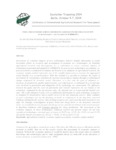Please use this identifier to cite or link to this item:
http://www.alice.cnptia.embrapa.br/alice/handle/doc/534035Full metadata record
| DC Field | Value | Language |
|---|---|---|
| dc.contributor.author | WANDER, A. E. | pt_BR |
| dc.contributor.author | MAGALHÃES, M. C. | pt_BR |
| dc.contributor.author | VEDOVOTO, G. L. | pt_BR |
| dc.contributor.author | MARTINS, E. C. | pt_BR |
| dc.date.accessioned | 2011-04-10T11:11:11Z | pt_BR |
| dc.date.available | 2011-04-10T11:11:11Z | pt_BR |
| dc.date.created | 2008-05-21 | pt_BR |
| dc.date.issued | 2004 | pt_BR |
| dc.identifier.citation | In: CONFERENCE ON INTERNATIONAL AGRICULTURAL RESEARCH FOR DEVELOPMENT, 2004, Berlin. Book of abstracts... Berlin: International Research on Food Security, Natural Resource Management and Rural Development, 2004. 10 f. | pt_BR |
| dc.identifier.uri | http://www.alice.cnptia.embrapa.br/alice/handle/doc/534035 | pt_BR |
| dc.description | Abstract - Assessment of economic impacts of new technologies delivers helpful information to justify investment efforts in research and development to generate new technologies. In Brazilian agricultural research and development, it?s a convention to assess economic impacts of technologies generated and adapted by EMBRAPA. As soon as new technologies are adopted, expost assessment is conducted to evaluate net benefits of its adoption. In agricultural research, the economic surplus method represents one of the suitable frameworks to measure the aggregated social benefits of a research project. With this method it is possible to estimate the return of investments by calculating a variation of consumer and producer surplus through a technological change originated by research results. Therefore, in a first step the gain of adoption i.e., increases in productivity, quality improvements, cost reduction etc. is estimated. In a second step, costs involved in generation and adaptation of the technology are enumerated. The difference between the gains and the costs of generation and transfer represents the net benefit of the technology, explained by the net present value, the internal rate of return and the benefit-costratio. The so far obtained results serve as additional information for each technology to improve its adoption by beneficiaries and to enable access to the new financing sources. Some examples of such technologies are (a) the finishing of lambs in confinement in the Brazilian semi-arid Northeast during the dry season, when feeding resources are scarce and the lamb meat prices are high; (b) strategic vermifugation of goats herds and sheep flocks in the Brazilian semi-arid areas; (c) standardized cuts for goat and sheep carcass and (d) enrichment of the native pastures in Brazilian Northeast with Cynodon dactylon for sheep production. The assessment of the economic impacts of these technologies estimated positive net present values for all four considered technologies, internal rates of return of 26.2% (a), 13.8% (b), 52.8% (c) and 31.0% (d) and the benefit-cost-ratios of 2.92 (a), 1.19 (b), 11.64 (c) and 3.37 (d). | pt_BR |
| dc.language.iso | eng | eng |
| dc.rights | openAccess | eng |
| dc.subject | Avaliação de impactos | pt_BR |
| dc.subject | Embrapa | pt_BR |
| dc.subject | Avaliação econômica | pt_BR |
| dc.subject | Brasil | pt_BR |
| dc.subject | Semiárido | pt_BR |
| dc.subject | Adoção de tecnologia | pt_BR |
| dc.subject | Environmental impact assessment | pt_BR |
| dc.subject | Fattening | pt_BR |
| dc.title | Using the economic surplus method to assess economic impacts of new technologies: case studies of Embrapa. | pt_BR |
| dc.type | Artigo em anais e proceedings | pt_BR |
| dc.date.updated | 2019-09-25T11:11:11Z | pt_BR |
| dc.subject.thesagro | Impacto econômico | pt_BR |
| dc.subject.thesagro | Análise econômica | pt_BR |
| dc.subject.thesagro | Análise de Risco | pt_BR |
| dc.subject.thesagro | Adoção de inovações | pt_BR |
| dc.subject.thesagro | Ovino | pt_BR |
| dc.subject.thesagro | Cordeiro | pt_BR |
| dc.subject.thesagro | Terminação | pt_BR |
| dc.subject.thesagro | Impacto ambiental | pt_BR |
| dc.subject.thesagro | Confinamento | pt_BR |
| dc.subject.nalthesaurus | Sheep | pt_BR |
| dc.subject.nalthesaurus | Lambs | pt_BR |
| dc.subject.nalthesaurus | Technology transfer | pt_BR |
| dc.subject.nalthesaurus | Innovation adoption | pt_BR |
| dc.subject.nalthesaurus | Risk analysis | pt_BR |
| dc.subject.nalthesaurus | Brazil | pt_BR |
| dc.subject.nalthesaurus | Semiarid zones | pt_BR |
| riaa.ainfo.id | 534035 | pt_BR |
| riaa.ainfo.lastupdate | 2019-09-25 -03:00:00 | pt_BR |
| dc.contributor.institution | Alcido Elenor Wander, CNPC; GRACIELA LUZIA VEDOVOTO, SGE; ESPEDITO CEZARIO MARTINS, CNPC. | pt_BR |
| Appears in Collections: | Artigo em anais de congresso (CNPC)  | |
Files in This Item:
| File | Description | Size | Format | |
|---|---|---|---|---|
| AACUsingtheeconomic.pdf | 104.13 kB | Adobe PDF |  View/Open |









